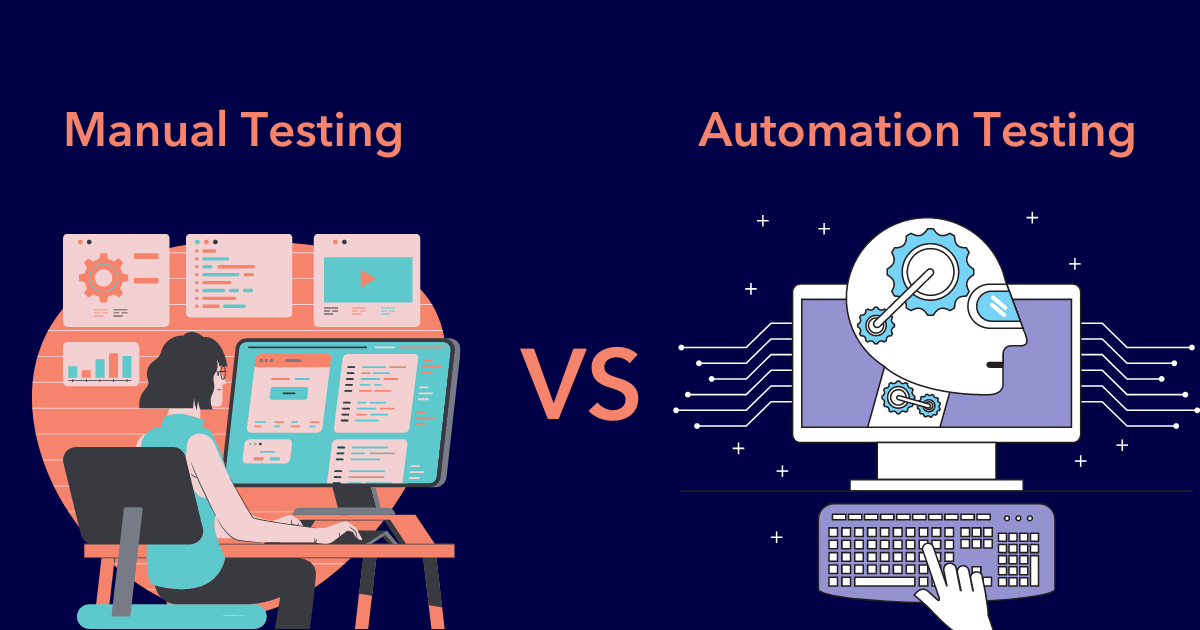Decoding Software Testing vs. Automation Testing: Striking the Balance
Software testing is an integral part of the software development process that ensures the delivery of high-quality and error-free applications. With the advancement of technology, automation testing has emerged as a powerful approach to enhance the efficiency and effectiveness of software testing efforts. In this blog post, we will delve into the differences between software testing and automation testing, their unique characteristics, and how they complement each other in achieving comprehensive quality assurance.
Software Testing: The Human Touch
Software testing is a manual process in which skilled testers carefully evaluate the application’s functionalities, performance, and user experience. The objective of software testing is to identify defects, verify that the application meets its requirements, and ensure it works as intended.
Key Aspects of Software Testing
- Exploratory Testing: Testers use their creativity and intuition to explore the application, identifying hidden defects and usability issues.
- User Experience Testing: Software testing pays special attention to how users interact with the application, ensuring it offers a seamless and satisfying user experience.
- Edge Case Testing: Testers examine various edge cases and scenarios that may not be addressed in formal requirements.
- Usability Testing: This involves evaluating the application’s user interface and ease of use from an end-user’s perspective.
http://informationarray.com/2023/07/21/striking-the-balance-software-testing-vs-software-development/
Automation Testing: The Power of Machines
Automation testing employs specialized testing tools and scripts to execute test cases automatically. It aims to enhance testing efficiency, reduce human intervention, and provide rapid feedback during the software development process.
Key Aspects of Automation Testing
- Test Script Creation: Testers write scripts that automate the execution of test cases, allowing repetitive tests to be performed more quickly and accurately.
- Regression Testing: Automation testing is particularly useful for conducting frequent regression tests, ensuring that new changes do not negatively impact existing functionalities.
- Performance Testing: Automated tools help simulate high loads and stress scenarios, allowing testers to evaluate application performance under different conditions.
- Integration Testing: Automation testing verifies the interactions between different components and modules of the application.
Striking the Balance
Software testing and automation testing are not mutually exclusive; instead, they complement each other in achieving comprehensive quality assurance.
1. Choosing the Right Test Cases: Testers need to identify which test cases are best suited for manual testing and which can be automated. Critical and exploratory testing often require human intervention, while repetitive and time-consuming tasks are ideal for automation.
2. Regression Testing: Automation testing is highly valuable for conducting regression tests, which are often time-consuming and require repeated execution. Automating these tests allows for quick and frequent validation of existing functionalities.
3. Efficiency and Speed: Automation testing significantly improves testing efficiency and speed, especially in environments, where frequent releases demand rapid feedback.
4. User Experience: Manual testing is essential for evaluating user experience and usability aspects. Testers’ insights and feedback play a crucial role in ensuring the application meets users’ expectations.
Software testing and automation testing are both essential in the software development process. While software testing brings the human touch and intuition, automation testing provides speed, accuracy, and efficiency. Striking the right balance between the two approaches ensures comprehensive quality assurance, delivering reliable and user-friendly applications to end-users.
By combining the power of human insights with the efficiency of automation, development teams can build robust software that stands the test of time and delights users with seamless experiences. Embracing both software testing and automation testing is key to achieving a harmonious development process and delivering exceptional software products.









